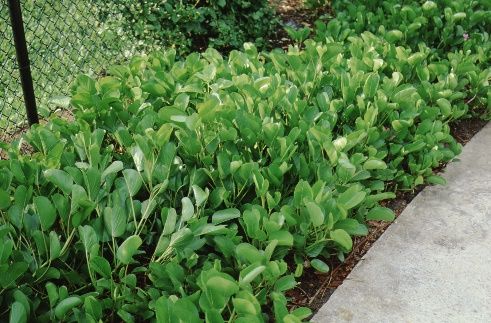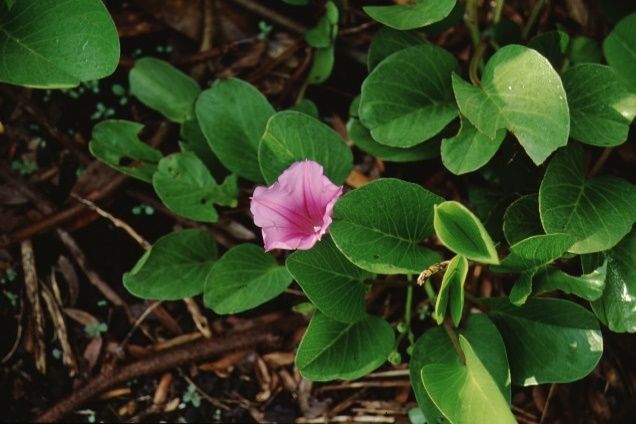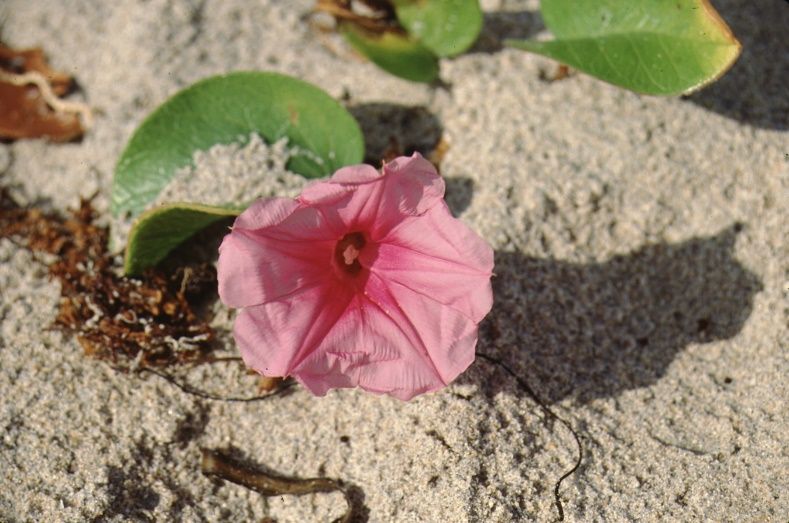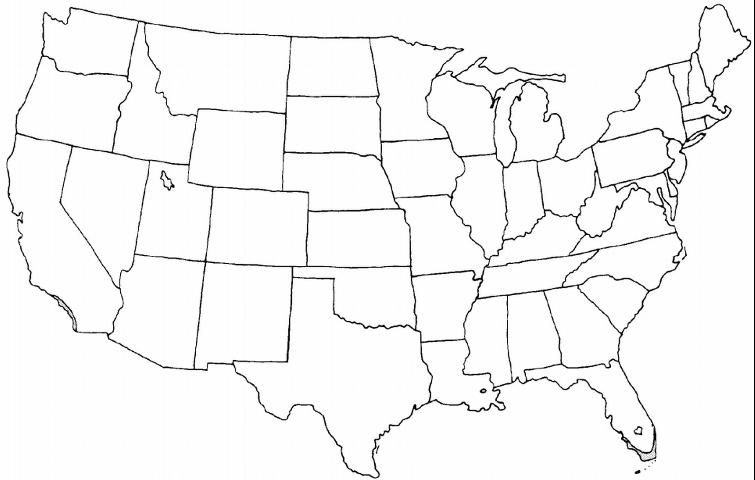Introduction
The beach morning glory is an herbaceous vine that grows wild on ocean shores from Florida to Texas and Georgia. This plant reaches a height of 4 to 6 inches, but the stems may creep along the ground to a length of 75 feet. It roots and occasionally branches from the nodes and develops a long, thick, starchy root. The 2.5 to 4 inch long leaves are thick, smooth, and two-lobed; the leaf shape reminds one of a goat’s footprint or perhaps an orchid tree leaf. The beach morning glory is truly charming when in bloom. Funnel-shaped flowers that are 2 ½ to 3 inches wide occur in the summer and fall. The flowers are pinkish lavender with purple-red throats. They open in the early morning and close before noon each day that the plant is in bloom. Small, round seedpods that contain four velvety, dark brown seeds appear on this plant after flowering.

Credit: Edward F. Gilman, UF/IFAS

Credit: Edward F. Gilman, UF/IFAS

Credit: Edward F. Gilman, UF/IFAS
General Information
Scientific name: Ipomoea pes-caprae
Pronunciation: ipp-oh-MEE-uh pess-kuh-PREE
Common name(s): railroad vine, beach morning glory, bayhops
Family: Convolvulaceae
Plant type: ground cover
USDA hardiness zones: 10B through 11 (Figure 4)
Planting month for zone 10 and 11: year round
Origin: native to Florida
Invasive potential: aggressive, spreading plant
Uses: ground cover
Availability: somewhat available, may have to go out of the region to find the plant

Credit:
Description
Height: depends upon supporting structure
Spread: depends upon supporting structure
Plant habit: spreading; prostrate (flat)
Plant density: moderate
Growth rate: fast
Texture: coarse
Foliage
Leaf arrangement: alternate
Leaf type: simple
Leaf margin: lobed
Leaf shape: elliptic (oval)
Leaf venation: pinnate
Leaf type and persistence: evergreen
Leaf blade length: 2 to 4 inches
Leaf color: green
Fall color: no fall color change
Fall characteristic: not showy
Flower
Flower color: purple
Flower characteristic: summer flowering; fall flowering
Fruit
Fruit shape: round
Fruit length: less than 0.5 inch
Fruit cover: dry or hard
Fruit color: unknown
Fruit characteristic: inconspicuous and not showy
Trunk and Branches
Trunk/bark/branches: not applicable
Current year stem/twig color: green
Current year stem/twig thickness: thick
Culture
Light requirement: plant grows in full sun
Soil tolerances: acidic; alkaline; sand; loam;
Drought tolerance: high
Soil salt tolerances: good
Plant spacing: 24 to 36 inches
Other
Roots: not applicable
Winter interest: plant has winter interest due to unusual form, nice persistent fruits, showy winter trunk, or winter flowers
Outstanding plant: not particularly outstanding
Pest resistance: no serious pests are normally seen on the plant
Use and Management
The beach morning glory is well adapted to beaches and coastal dunes. It is useful as a sand binder and ground cover, even on the ocean side of the first dune. They grow right down to the high tide mark on the beach. Plant on 3foot centers to quickly form a ground cover. It may not be well suited for home landscapes because it grows too quickly and has a very open growth habit.
This full sun plant will prosper on most well-drained soils. It grows very rapidly and needs to be pruned and contained if planted in a landscape. To say the plant grows quickly is to preach the truth. The beach morning glory will tolerate very high levels of salt spray but cannot endure over watering. Basically, plant it, water a few times and leave the sprinkler off.
Pests and Diseases
No pests or diseases are of major concern.